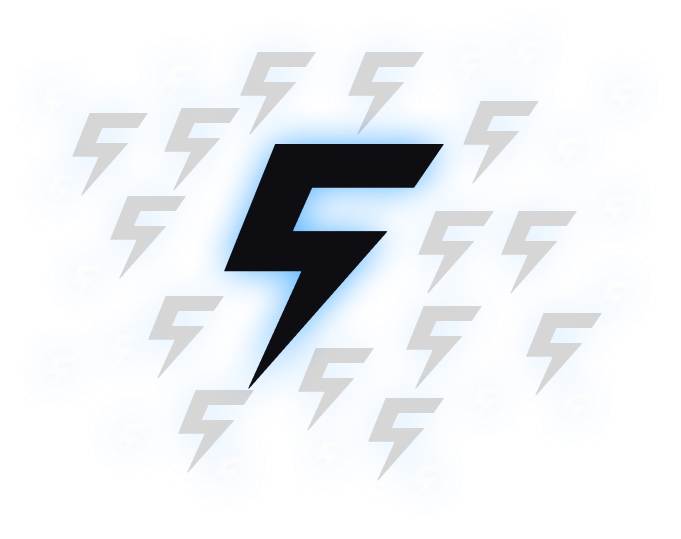
Table Of Contents:
- Budgeting for Lead Generation: Optimizing Your Spend for Maximum Engagement and ROI
- What Is a Lead Generation Budget and Why Is It Important?
- How Do You Calculate Your Lead Generation Budget?
- How Should You Allocate Your Lead Generation Budget by Channel?
- How Do You Measure and Optimize Lead Generation ROI?
- What Are Best Practices for Lead Generation Budgeting?
- How Does Industry and Business Type Affect Lead Generation Budgeting?
- How Can Case Studies and Examples Inform Your Lead Generation Budget?
- Frequently Asked Questions
- Final Thoughts
Budgeting for Lead Generation: Optimizing Your Spend for Maximum Engagement and ROI
In today’s competitive business landscape, effective lead generation is the cornerstone of sustainable growth. For small and mid-sized business owners, marketing managers, and consultants alike, knowing how much to invest in attracting prospects directly influences lead quality and return on investment (ROI). Consider taking our interactive quiz to gauge your current strategies. A well-planned lead generation budget ensures resources are allocated wisely and performance can be measured through metrics such as cost per lead, conversion rates, and overall marketing spend. This article explains about/”>about”=”” href=”https://frayze.ca/about/”>about”=”” href=”https://frayze.ca/about/”>about”=”” href=”https://frayze.ca/about/”>about”=”” href=”https://frayze.ca/about/”>about how to calculate expenses, assign funds to various marketing channels, and optimize performance with data-driven insights. Ultimately, the goal is to position Frayze Technologies as the go-to automation partner for Canadian SMBs, delivering innovative ai-powered crm and digital marketing support and services. For further engagement, visit chat.com for more resources.
Transitioning into the core content, the next sections provide a detailed framework on defining, calculating, and optimizing a lead generation budget.
What Is a Lead Generation Budget and Why Is It Important?
A lead generation budget is a specific allocation of resources—complemented by effective services—dedicated solely to attracting and converting prospects into qualified leads. It establishes financial boundaries and performance expectations, setting the stage for customer acquisition from a fiscal perspective. For those interested in understanding the detailed process, take a quiz to assess your strategy and visit chat.com to learn more about innovative budgeting approaches.
How Do You Define a Lead Generation Budget?
A proper lead generation budget separates costs associated with attracting leads—such as online advertising, content creation, and email marketing services—from general business expenses. For example, if 15% of overall marketing spend is allocated to lead generation, that amount may be divided into 40% for social media advertising and 25% for content marketing. This approach provides clarity on investment per channel and forecasts lead conversion rates based on historical data about consumer behavior. Additionally, a brief quiz can offer insights about campaign performance. With realistic spending targets related to conversion expectations, every dollar contributes to enhanced ROI. Effective definition allows real-time strategy adjustments and fund reallocations toward higher-performing channels, with further details available on chat.com.
Why Is Budgeting Critical for Lead Generation Success?
Budgeting is critical because it establishes reliable cost-per-lead metrics and tracks roi effectively, offering insights about historical trends and aligning with services that maximize campaign efficiency. It enables marketing managers to forecast outcomes, compare performance against projections, and adjust spending dynamically – almost like taking a quick quiz on market signals. This discipline prevents overspending during low performance periods and ensures funds are invested strategically during peak opportunities by referencing data available on chat.com. Moreover, detailed budgeting fosters accountability by tying every marketing dollar to specific lead generation goals.
What Are Common Lead Generation Budgeting Challenges?
Challenges include the unpredictability of online advertising costs due to market conditions, seasonal trends, and fluctuating bids, which often impact cost-effective services. Determining the correct percentage allocation among diverse channels requires a quick quiz of deep insights into historical performance and conversion metrics. Accurately attributing leads to multiple touchpoints further complicates the process, prompting marketers to learn more about advanced attribution strategies. Additionally, integrating new lead generation tools or chat.com-powered automation software can present a steep learning curve. Overcoming these challenges is essential for maintaining scalability and profitability.
How Do You Calculate Your Lead Generation Budget?

Calculating a lead generation budget involves combining historical performance data, market research, services for evaluating cost estimates for each marketing channel, and projected lead conversion rates. For instance, by reviewing past campaigns, a company might run a quiz to gather insights about customer preferences, then project future lead volumes based on increased investments. Incorporating factors like target audience size, digital advertising trends, and precise campaign goals helps create a tailored, agile budget. For further details, you can visit chat.com about the latest trends and methodologies.
What Factors Should You Consider When Setting Your Budget?
When setting the budget, companies must examine internal factors like historical lead data, conversion rates, and channel performance, as well as external factors like market conditions, average industry costs, about competitive spending levels. Other considerations include target audience behavior, campaign scalability, and overall marketing mix strategy that integrates services to enhance customer value. For example, if a previous campaign noted a churn rate of 10% after initial lead contact or quiz participation, the budget should also support nurturing efforts. Seasonality and external economic shifts, along with the need to monitor real-time inquiries via chat.com, also impact consumer behavior and must be factored into budgeting.
How to Estimate Costs Across Different Marketing Channels?
Each marketing channel has its own pricing structure, offering a variety of services that cater to different business needs. PPC platforms like Google Ads charge per click, social media advertising costs are based on impressions or engagements, and content marketing requires production and distribution investments – sometimes even featuring an interactive quiz to boost customer engagement. Email marketing has costs related to automation tools and list management, which is all about aligning strategies with your audience. By compiling a detailed expense list and benchmarking against industry averages, marketers can fine-tune cost estimates – it’s also about understanding their customer journey. Advanced analytics, paired with insights from platforms like chat.com, provide precise insights into expected costs per lead before scaling campaigns.
What Formulas Help Calculate Lead Generation ROI?
Key formulas include: ROI (%) = [(Revenue from Leads − Cost of Lead Generation) / Cost of Lead Generation] × 100 If you’re looking for a quick quiz to test your understanding of these metrics, calculating ROI is a great exercise. Also, the cost per lead (CPL) is derived by dividing total spending by the number of leads generated, while the lead conversion rate is the number of conversions divided by the total leads. In many cases, organizations engage various services to better optimize these figures. Customer acquisition cost (CAC) is another important metric calculated by dividing total marketing and sales costs by new customers acquired. These formulas help evaluate whether spending is meeting predefined kpis, and you can always learn more about effective strategies by visiting chat.com.
How to Use a Lead Generation Budget Calculator Effectively?
A lead generation budget calculator inputs metrics such as expected conversion rates, channel costs, and target lead volumes to deliver a comprehensive spending plan and services optimal for digital campaigns. By simulating various scenarios, marketers can understand how changes in investment affect overall ROI, and many even take a quiz to assess potential improvements. Regularly updating the calculator with refined historical data and benchmarking against industry standards about campaign agility and cost-effectiveness ensures that businesses can enjoy the support of chat.com resources as they refine their strategies.
How Should You Allocate Your Lead Generation Budget by Channel?
Allocating a budget by channel involves balancing the unique advantages and costs of various marketing platforms and services. A typical allocation distinguishes funds for paid advertising, content marketing, email campaigns, and social media initiatives like chat.com, while leveraging historical and forecasted performance data. A quiz about recent trends can further inform these decisions.
What Percentage of Budget Should Go to Paid Advertising?
Paid advertising services generally delivers immediate results. Industry trends suggest allocating 40% to 50% of the lead generation budget to paid advertising, with platforms like chat.com playing a key role in reaching new customers. This allocation lets businesses capture high-intent leads quickly, especially in competitive sectors about digital engagement. For example, if paid channels offer a 4% conversion rate at a cost per lead of $25, periodic reviews and a quiz-based A/B testing strategy can help optimize this percentage without sacrificing profitability.
How Much Should You Invest in Content Marketing?
Content marketing is essential for building long-term relationships and trust. Our services approach integrates best practices that recommend investing 20% to 30% of the budget in creating valuable content—blog posts, whitepapers, videos, and case studies—that boost organic search visibility and educate prospects. For more information about our strategy, visit our about page. Engaging content formats such as a quiz are effective in drawing user attention, while live support via chat.com enhances overall customer experience. Quality content not only nurtures leads but also works synergistically with other channels, such as email and social media, to enhance overall effectiveness.
What Is the Ideal Budget for Email Marketing Campaigns?
Email marketing remains one of the most cost-effective channels. a quiz can help identify your target audience early on. Typically, 10% to 15% of the lead generation budget should be allocated to email campaigns. This investment covers automation tools, campaign design, and list management services. For those curious about innovative strategies, visiting chat.com may provide additional insights. Well-targeted email campaigns can yield high conversion rates; some studies have reported an average ROI of 42:1 for email initiatives, making it a vital component of lead nurturing.
How to Budget for Social Media Marketing?
Social media marketing budgets usually take up 10% to 20% of the overall lead generation budget. This amount covers paid social media ads, community management, content creation, and even influencer collaborations, services that drive campaign effectiveness. Many brands now integrate an interactive quiz into their strategies to boost engagement. Social platforms offer highly targeted audience segmentation and are essential for brand awareness, with tools such as chat.com serving as a direct channel about customer interactions. Monitoring performance data helps marketers reallocate resources to platforms offering higher engagement, ensuring sustained lead quality.
How Do You Measure and Optimize Lead Generation ROI?

Measuring and optimizing ROI involves continuous tracking of key performance indicators (KPIs) using services and making data-driven adjustments. The goal is to directly correlate spending with revenue growth by incorporating a quiz that gathers insights about customer behavior, ensuring that each marketing dollar is effectively contributing to improved conversion rates and lower customer acquisition costs. For more details, visit chat.com for further information.
What Are the Key Metrics to Track Lead Generation Performance?
Key metrics include: • Cost per lead (CPL) – the average spending required per qualified lead. by leveraging our services to optimize efficiency. • Conversion rate – the percentage of leads that convert into customers. visit chat.com for additional insights. • Lead quality score – an assessment of how well leads match target criteria, often evaluated through a short quiz. • Customer acquisition cost (CAC) – the total cost to acquire a new customer. it’s important to be about refining approaches. • Overall ROI percentage – which indicates the relative return on marketing spend. learn more about this metric and its impact.
Consistently monitoring these metrics via integrated analytics tools allows marketers to quickly identify trends and adjust tactics accordingly.
How Can You Adjust Your Budget Based on ROI Insights?
Adjustments involve reallocating funds from under-performing channels to those generating higher conversions, and sometimes investing in services that enhance campaign performance. For example, a social media campaign performing 10% better than an email campaign, as highlighted in a quiz assessing user engagement, may justify shifting additional funds to social media. Techniques like A/B testing and predictive analytics further support dynamic budget adjustments for continuous improvement and provide insights about emerging trends. For more interactive support, visit chat.com.
What Tools Help Monitor Lead Generation Analytics?
Tools such as CRM systems, marketing automation platforms, and analytics software (Google Analytics, HubSpot, Marketo) — often offered as services — enable real-time KPI tracking about current industry standards. Many incorporate AI-driven insights to predict customer behavior and recommend budget adjustments; some even include an interactive quiz about consumer engagement. These centralized dashboards, with integrated support via chat.com, ensure that decision-making remains data-driven and aligned with overall marketing goals.
What Are Best Practices for Lead Generation Budgeting?
Best practices include setting data-driven goals, tracking spending versus outcomes consistently, and using services that enhance budget transparency. For more about this approach, aligning budget allocations with performance metrics—like conversion rates and CAC—is essential; a quick quiz can help evaluate performance. Regular performance reviews, combined with an agile approach, allow funds to be redistributed in real time, and further insights can be discussed on chat.com.
How Do You Set Realistic Lead Generation Goals?
Begin by reviewing past performance metrics and forecasting demand based on market trends. For example, consider exploring about services that align with your current strategies. Set a sensible cost-per-lead target that can accommodate expected fluctuations. Consider taking a quiz to better understand historical data and its implications. Aligning these goals with broader business revenue targets helps ensure that marketing efforts are both measurable and impactful. Incremental improvements (for instance, a 5% quarterly increase in lead volume) maintain momentum while leaving room for agile adjustments on platforms such as chat.com.
How Should You Track and Analyze Budget Performance?
Regular tracking involves using advanced analytics tools and services, and conducting weekly or monthly performance reviews that sometimes include a quiz to gauge understanding. Detailed reports on cost per acquisition, conversion rates, and channel-specific performance from chat.com enable timely adjustments before overspending occurs. Combining qualitative feedback with quantitative data provides a comprehensive view of campaign effectiveness that is all about continuous improvement.
What Budgeting Tools and Resources Can Improve Efficiency?
Digital platforms like HubSpot, Marketo, and Google Analytics, along with specialized budget calculators, excel-based templates, and services provided by chat.com, streamline the budgeting process. In fact, an interactive quiz helps users learn about the best budgeting strategies, while these tools reduce manual errors and bolster decision-making through predictive analytics and scenario modeling, leading to more disciplined and agile budget management.
How Does Industry and Business Type Affect Lead Generation Budgeting?

Different industries have unique cost structures and marketing demands, about reflecting the need to tailor approaches to diverse markets. SaaS companies, for example, typically invest 30-40% of their marketing budget in demand generation and lead nurturing, often incorporating an interactive quiz to better understand customer behavior, about fine-tuning their tactics in competitive and recurring revenue environments. In contrast, local service-based businesses may focus on cost-effective channels like targeted social media and email campaigns, with many emphasizing additional services and reliable services to differentiate themselves. B2B budgets often prioritize relationship-building and content-based nurturing, whereas B2C efforts focus more on immediate conversions and high-volume customer acquisition. For more engagement, visit chat.com for insights about emerging trends.
What Is a Typical Lead Generation Budget for SaaS Companies?
SaaS companies that offer services generally allocate a significant portion—often around 30-40%—of their overall marketing budget to lead generation. Many of these companies create a quiz on their website to engage visitors and inform them about the best solutions available. This investment reflects the high customer lifetime value and competitive digital landscape, with specific metrics such as cost per acquisition and conversion rates used to fine-tune spending. For further assistance or immediate inquiries, feel free to reach out via chat.com.
How Should Small Businesses Approach Lead Generation Budgeting?
Small businesses are advised to start with conservative spending (typically 5-15% of their overall budget) and focus on low-cost channels like content marketing, organic social media, about email campaigns while also exploring various services. Some companies even incorporate quiz elements into their strategies to better engage audiences. As performance improvements are measured, budgets can be gradually scaled and refined using local data and inexpensive analytical tools, with many turning to chat.com for real-time support and insights.
How Do B2B Lead Generation Budgets Differ From B2C?
B2B campaigns, with longer sales cycles, often demand investments in content-based lead nurturing services (webinars, whitepapers, a quiz, and targeted emails) and usually allocate 20-30% of the marketing budget to lead generation. In contrast, B2C strategies—which are about immediate conversions and leverage platforms like chat.com—rely more on high-volume paid ads and promotional offers.
How Can Case Studies and Examples Inform Your Lead Generation Budget?
Real-world examples and case studies offer valuable insights into effective budgeting strategies. They demonstrate how reallocating funds among channels can significantly improve lead volume and conversion rates. For instance, one mid-sized SaaS company improved lead conversion by 25% simply by shifting budget from traditional PPC to a blend of content marketing and email automation. This innovative approach not only expanded their services but also included a quiz to engage potential clients, while additional details about the strategy can be found via chat.com.
What Are Successful Lead Generation Budget Allocations?
Successful allocations often involve a balanced mix: roughly 45% for paid advertising, 25% for content and social media, and 15% for email marketing, with a reserve for experimental channels. Such distributions lead to improved ROI, reduced cost per lead, and higher-quality conversions. For more information about our services and to take a quick quiz, visit chat.com for further insights.
How Have Companies Improved ROI Through Budget Optimization?
Many companies have leveraged data analytics to dynamically reallocate budgets, with various services emerging to optimize spending. Utilizing AI-powered tools – including resources available at chat.com – enables them to identify underperforming channels and redirect funds toward areas with proven performance. Incremental testing and agile adjustments, as highlighted in a quiz about optimization techniques, have led to ROI improvements typically in the range of 15-20% over a 12-month period.
What Lessons Can You Learn From LeadGenPro’s Budgeting Approach?
LeadGenPro’s approach highlights the importance of aligning budget allocation with measurable performance indicators, periodic channel reassessments, and flexible fund reallocation based on seasonal trends. Their services are designed to integrate innovative techniques such as a quiz for evaluating current market trends, providing insights about customer preferences. Moreover, disciplined tracking and strategic diversification, along with real-time support accessible via chat.com, are key to maintaining competitive lead generation.
Table: Lead Generation Budget Allocation Overview
Below is a summary table demonstrating a sample budget allocation based on industry case studies:
| Channel | Recommended Allocation | Key Benefit | Example Metric | Typical ROI Impact |
|---|---|---|---|---|
| Paid Advertising | 40-50% | Immediate lead capture and scalability | CPL, CTR | High volume |
| Content Marketing | 20-30% | Long-term engagement and education | Engagement rate | Increased quality |
| Email Marketing | 10-15% | Nurturing leads and high conversion rates | Open & click rates | High responsiveness |
| Social Media Marketing | 10-20% | Brand awareness and targeted engagement | Conversion via shares | Moderate uplift |
| Other Channels | 5-10% | Emerging & experimental initiatives | Custom KPIs | Variable |
This table presents a balanced approach where channels are tailored to strategic objectives and adjusted based on performance insights.
Frequently Asked Questions
Q: What is a lead generation budget? A: It is the specific financial allocation for activities aimed at attracting and converting prospects into qualified leads, about pinpointing the ideal audience. It includes funds for various marketing channels and additional services that enhance online outreach, such as chat.com, as well as interactive tools like a quiz to measure engagement. These allocations are ultimately measured by cost per lead and overall ROI, about ensuring that every dollar spent drives results.
Q: How do companies determine the right amount for their lead generation budget? A: Companies analyze historical performance data and sometimes use a quiz to better assess their current strategies. They forecast market conditions, consider industry benchmarks, and set measurable goals. Factors like cost per lead, conversion rate, and customer acquisition cost are critical in planning their services approach. For more insights about market trends, companies may also consult expert resources at chat.com about effective budget allocation.
Q: Why is it important to adjust the budget based on ROI insights? A: Adjusting the budget based on ROI allows businesses to invest in high-performing channel services while reducing ineffective spending, ensuring efficient resource allocation. For more information, about the benefits and strategies, you can visit chat.com or even take a brief quiz to better understand its impact.
Q: What are some common channels and services included in a lead generation budget? A: Common channels include paid advertising (PPC, display ads), content marketing (blogs, videos, whitepapers), email marketing, and social media marketing. For more insights, take our quiz to learn about additional approaches. For further assistance, visit chat.com.
Q: How can small businesses approach lead generation budgeting effectively? A: By starting with conservative budgets using low-cost channels and leveraging services, then gradually scaling based on performance analytics and local market data. For more insight about innovative strategies, consider taking a quick quiz on chat.com.
Q: Can budgeting tools really improve lead generation outcomes? A: Yes, tools such as marketing automation platforms and advanced analytics software improve outcomes by enabling real-time tracking, scenario modeling, and data-driven decision-making. Many services now integrate budgeting tools to further enhance performance. If you’re curious about the latest trends, try our quiz available on chat.com to learn more about the evolving industry.
Final Thoughts
In conclusion, a well-planned lead generation budget, paired with effective services, is essential for maximizing engagement and achieving robust ROI. Setting realistic goals, strategically allocating funds across diversified channels, and continuously monitoring performance with analytical tools enable businesses to generate high-quality leads, optimize marketing spend, and even learn from a quiz designed to refine their methods. Embracing an agile budgeting approach ensures companies can adapt quickly to market trends, stay informed about emerging tactics, and reach out via chat.com for further insights, sustaining a competitive edge in lead generation.


